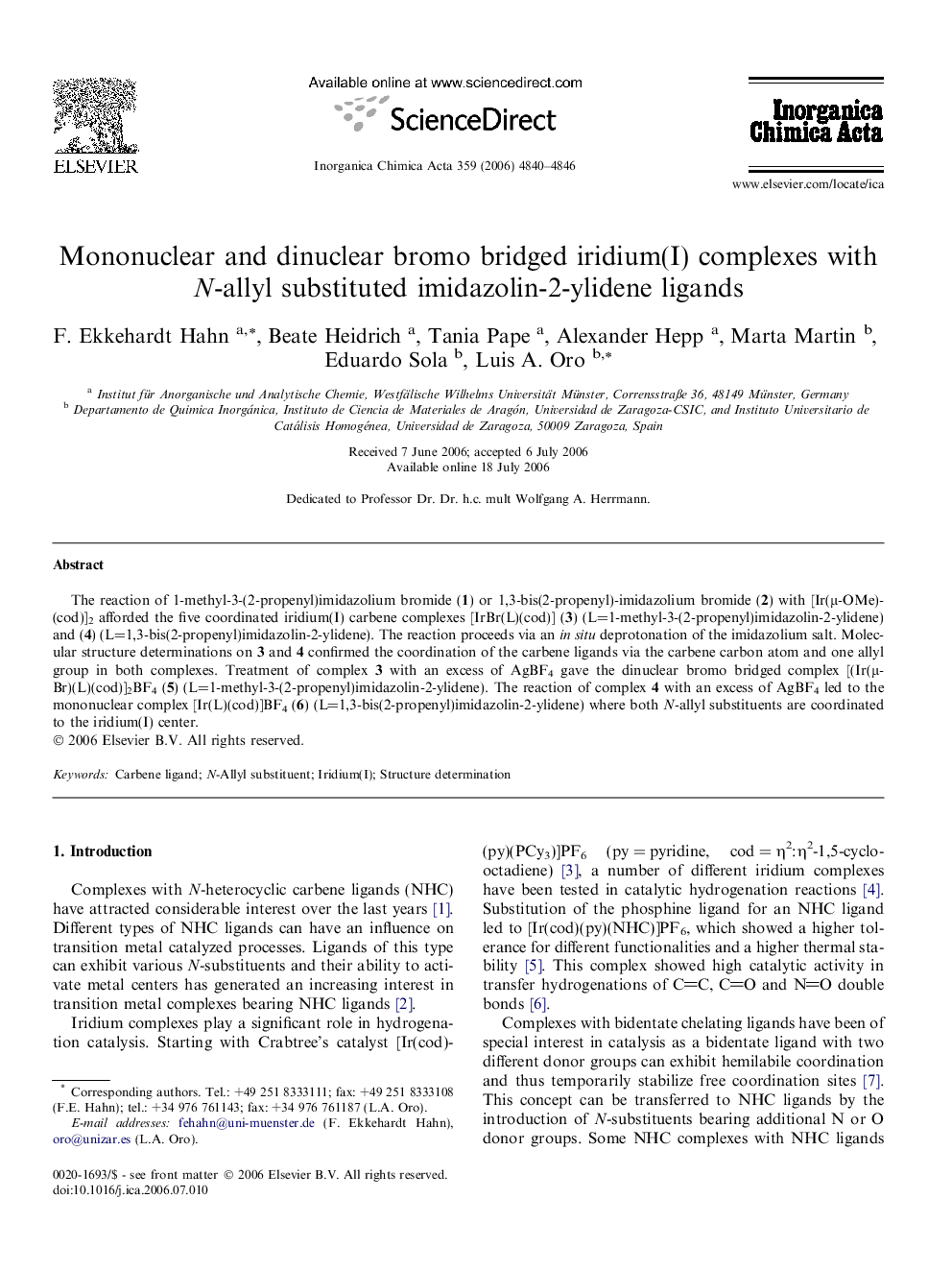| Article ID | Journal | Published Year | Pages | File Type |
|---|---|---|---|---|
| 1310959 | Inorganica Chimica Acta | 2006 | 7 Pages |
The reaction of 1-methyl-3-(2-propenyl)imidazolium bromide (1) or 1,3-bis(2-propenyl)-imidazolium bromide (2) with [Ir(μ-OMe)(cod)]2 afforded the five coordinated iridium(I) carbene complexes [IrBr(L)(cod)] (3) (L=1-methyl-3-(2-propenyl)imidazolin-2-ylidene) and (4) (L=1,3-bis(2-propenyl)imidazolin-2-ylidene). The reaction proceeds via an in situ deprotonation of the imidazolium salt. Molecular structure determinations on 3 and 4 confirmed the coordination of the carbene ligands via the carbene carbon atom and one allyl group in both complexes. Treatment of complex 3 with an excess of AgBF4 gave the dinuclear bromo bridged complex [(Ir(μ-Br)(L)(cod)]2BF4 (5) (L=1-methyl-3-(2-propenyl)imidazolin-2-ylidene). The reaction of complex 4 with an excess of AgBF4 led to the mononuclear complex [Ir(L)(cod)]BF4 (6) (L=1,3-bis(2-propenyl)imidazolin-2-ylidene) where both N-allyl substituents are coordinated to the iridium(I) center.
Graphical abstractThe reaction of N-allyl substituted imidazolium salts with [Ir(μ-OMe)(cod)]2 yields the trigonal-bipyramidal IrI complexes 3 and 4. The reaction of 3 with an excess of AgBF4 gives the dinuclear, bromo bridged complex 5 while the same reaction with complex 4 leads to the symmetrical mononuclear complex 6 with two coordinated N-allyl groups.Figure optionsDownload full-size imageDownload as PowerPoint slide
